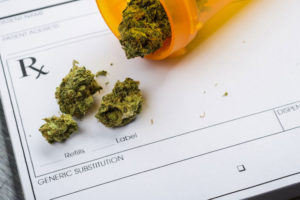 ember the Foundation for Peripheral Neuropathy held their highly acclaimed 2016 FPN International Research Symposium, attended by some of the world’s leading research scientists and neurologists in the forefront of neuropathic pain research. Because of promising studies confirming medical marijuana’s ability to relieve neuropathic pain, the Foundation devoted eight separate presentations to medical marijuana and its implications in treating neuropathic pain, as well as to regulatory, industry, and medical perspectives. The Foundation for Peripheral Neuropathy also includes information on medical marijuana on the FPN blog.
ember the Foundation for Peripheral Neuropathy held their highly acclaimed 2016 FPN International Research Symposium, attended by some of the world’s leading research scientists and neurologists in the forefront of neuropathic pain research. Because of promising studies confirming medical marijuana’s ability to relieve neuropathic pain, the Foundation devoted eight separate presentations to medical marijuana and its implications in treating neuropathic pain, as well as to regulatory, industry, and medical perspectives. The Foundation for Peripheral Neuropathy also includes information on medical marijuana on the FPN blog.
Treating Neuropathic Pain with Medical Marijuana (D.Morrow)
 ember the Foundation for Peripheral Neuropathy held their highly acclaimed 2016 FPN International Research Symposium, attended by some of the world’s leading research scientists and neurologists in the forefront of neuropathic pain research. Because of promising studies confirming medical marijuana’s ability to relieve neuropathic pain, the Foundation devoted eight separate presentations to medical marijuana and its implications in treating neuropathic pain, as well as to regulatory, industry, and medical perspectives. The Foundation for Peripheral Neuropathy also includes information on medical marijuana on the FPN blog.
ember the Foundation for Peripheral Neuropathy held their highly acclaimed 2016 FPN International Research Symposium, attended by some of the world’s leading research scientists and neurologists in the forefront of neuropathic pain research. Because of promising studies confirming medical marijuana’s ability to relieve neuropathic pain, the Foundation devoted eight separate presentations to medical marijuana and its implications in treating neuropathic pain, as well as to regulatory, industry, and medical perspectives. The Foundation for Peripheral Neuropathy also includes information on medical marijuana on the FPN blog.
 When welcoming new patients to the dispensary, we hear countless stories about the health challenges they’ve faced. Our patients have experienced a wide range of symptoms and conditions, but there’s one thing they have in common: other treatment options didn’t provide the relief they needed. In particular, patients who’ve been prescribed powerful opioid medications are often desperate for better options:
When welcoming new patients to the dispensary, we hear countless stories about the health challenges they’ve faced. Our patients have experienced a wide range of symptoms and conditions, but there’s one thing they have in common: other treatment options didn’t provide the relief they needed. In particular, patients who’ve been prescribed powerful opioid medications are often desperate for better options: Dispensaries are well known as places where patients can obtain medical marijuana products, but safe access is just one of many benefits to establishing regulated medical marijuana programs. Consider, for example, new data from the CDC showing that Americans are using marijuana more responsibly:
Dispensaries are well known as places where patients can obtain medical marijuana products, but safe access is just one of many benefits to establishing regulated medical marijuana programs. Consider, for example, new data from the CDC showing that Americans are using marijuana more responsibly: